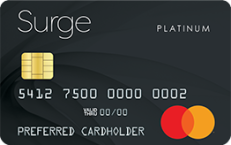Credit-Land.com is an independent, advertising-supported web site. Credit-Land.com receives compensation from most issuers whose offers appear on our site. Compensation from our advertising partners may impact how and where their products appear on our site, including, for example, the order in which they may appear within review lists. Credit-Land.com has not reviewed all available credit card offers in the marketplace.
July 2025: Credit Cards to Rebuild Credit
No one is immune to money troubles - most of us have been in a tight financial spot at least once in our lives. Whether it's because of unemployment, illness, divorce or other family issues, or gotten in over your head due to student loans, medical bills or other expenses, your credit history may have suffered. But good news - no matter how far your history has fallen, there is always a way to raise it. Just take your first step towards good credit with credit builder card offers from our partners below.
- Cards of July 2025
- Secured Cards
- Unsecured Cards
- Credit Builder Account
our choice
our choice
on Your
our choice
our choice
our choice
our choice
our choice
our choice
our choice
our choice
our choice
our choice
our choice
our choice
our choice
on Your
our choice
our choice
our choice
our choice
our choice
our choice
our choice
our choice
our choice
our choice
our choice
our choice
our choice
- Choose a plan to build credit and savings at the same time!
- Start with a Credit Builder Account that reports monthly payments to all 3 major credit bureaus*.
- Sample loans: $25/mo, 24 mos, 15.92% APR; $35/mo, 24 mos, 15.69% APR; $48/mo, 24 mos, 15.51% APR; $150/mo, 24 mos, 15.82% APR. See self.inc/pricing
our choice
our choice
our choice
our choice
- Get improved your credit score in less than 7 days
- No credit check, no interest, no fees – just instant approval
- High credit limit instantly lowers your credit usage
- Use the Ava app to pay bills on time, building a positive payment history
- Daily reporting to all bureaus
- Subscription fee of $6/month when you sign up for an annual plan, the month to month subscription fee is $9
our choice
our choice
our choice
fix credit! NO TIME
TO GET DESPERATE!
Despite the fact that you are drowning in debt and thinking that you completely and utterly ruined your credit history, there is still a credit builder card you can apply for. In fact there are several options to rebuild bad credit. They are:
- Secured cards: These cards give you a line of credit on the condition that you put down a deposit to act as collateral. That protects the lender in case you default. The deposit is usually equal to the line of credit you will be granted. Most secured cards report to credit bureaus, so your regular payments and good use of the card will help your credit history go up. Just make sure the secured card you choose reports to credit bureaus - and beware of high fees. Choose a card that charges reasonable fees.
- Becoming an authorized user on another account: Think of it like getting someone to cosign a loan for you. If you have a family member who is willing to apply for a credit card and add you as an authorized user, your careful and responsible use of that card can help your credit history. This is known as "piggybacking", and it's a legitimate way that many people give their credit a lift when they get stuck with a low credit history.
- Co-branded or shopping credit cards: Constantly shopping on line you probably thought about getting a credit line from your favorite or one of the popular retailers. Rebuilding credit with shopping credit cards is as real as ground under your feet. Wise and responsible credit use can help when it comes to credit repair. So applying for a shopping credit card to rebuild credit can be a good choice.
- Prepaid cards: Although these cards do not help your credit get better, they are a good option if you cannot get another type of credit card due to damaged credit. They offer the convenience of a credit card but are available to anyone - no credit check is needed. Use a prepaid card while you get back on your feet financially for those situations where you really need to pay for purchases with a card.
Small purchases, on-time payments, responsible use
Rebuilding credit takes patience and diligence. The key is to find the card that works for you and use it carefully and responsibly. That means doing a few things over several months or years, depending on how damaged your credit is. Make small purchases and pay off your balance on time to be more creditworthy.
Making small purchases means not spending more than you can easily pay off each month. If you get a secured card or get a card as an authorized user - you do need to use the card to make purchases to fix your credit history. Avoid the temptation to make purchases you cannot afford to pay off.
Always make payments on time - this is very important when you are repairing credit. It is a good idea to set up automatic payments so you never miss a due date. Depending on the card you use, you can also often set up text and email alerts so you know when a payment is due.
Using your card responsibly means staying under the credit limit and abiding by the credit card agreement. In time your credit history will bounce back and reflect your responsible use of credit. Credit card issuers will see that you are a good risk and that you are very likely to pay your debt.
Once you raise credit history, you will be eligible for lower rates, more rewards, and different credit cards. But you do have options to repair your credit, so take advantage of the one for you now.
questionsABOUT CREDIT CARDS
TO REBUILD CREDIT
Does the Chime® Credit Builder Visa® Credit Card act like a traditional credit card? What would be my credit limit for the card?
The Chime Secured Credit Builder Visa® Credit Card is a secured card linked to a Credit Builder Secured Account. It works just like a regular credit card in that you can use it to buy gas, groceries, or household goods anywhere Visa...
Read moreMy credit score is poor. Which credit card will raise my credit scores quickly?
First of all, note that improving your credit score is not a quick process. It may take up to a couple of years to turn bad credit into good credit. But if you want to improve your credit score faster, keep your credit...
Read moreWill I build credit with a store credit card?
You will be able to build your credit using a store credit card. To be able to build your credit you should first of all make sure the store card you want to apply for is reported to the major credit bureaus. Luckily,...
Read more






























